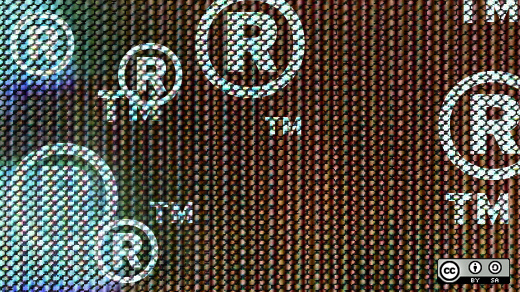
Having highlighted some interesting statistics regarding civil judgements rendered by the Intellectual Property Court (“IP Court”) in the previous section of this report, we turn now to statistics regarding judgements in administrative litigation cases.
Note that in terms of statistical basis, win rates of all administrative litigation cases, actions for revocation and actions seeking to impose an obligation are based on figures published by the Judicial Yuan, which include all cases heard by the IP Court. However, the proportion and win rates of patent and trademark litigation cases are calculated using the dataset provided by the Judicial Yuan at “data.gov.tw”, which includes only those judgements that are accessible by the public.
Win rates for plaintiffs in all administrative litigation cases
Win rates for plaintiffs in all administrative litigation before the IP Court are calculated as follows: total wins (each complete win counted as 1 case; each partial win is counted as 0.5 case) divided by all cases in which either the plaintiff or the defendants prevailed.
One of the characteristics of administrative litigation in Taiwan is the low win rate for plaintiffs. In most cases, the defendants (i.e. the authorities) prevail. This is also the case for IP related cases. We can see from the following chart that the win rates for plaintiffs in administrative litigation before the IP Court were lower than 20% in all but one year since 2008. However, since 2016 the win rate has trended upward somewhat to reach 23.5% in 2019 – the highest rate on record. It appears that in recent years where a plaintiff was dissatisfied with the decision made by the Taiwan Intellectual Property Office (the “TIPO”) and filed an administrative action, the plaintiff was more likely to obtain a favorable judgement.
Win rates for plaintiffs in all administrative litigation cases closed from 2008 to 2019
Source:Judicial Yuan
Win rates for plaintiffs in actions for revocation and actions seeking to impose an obligation
There are two types of administrative litigation in Taiwan: actions for revocation and actions seeking to impose an obligation. The former refers to simply revoking an unfavorable decision. In trademark matters for example, where the TIPO renders a decision that “the opposition is justified and the disputed trademark shall be cancelled”, the trademark owner may file an administrative action requiring the court to revoke their decision so that the trademark registration remains active as the cancellation becomes invalid. This kind of administrative action is called an action for revocation.
An action seeking to impose an obligation requires the court to order the authority to render a favorable decision. This kind of action also requires the court to revoke the previously rendered decision, as it is necessary to revoke the decision rejecting the plaintiff’s request before rendering another favorable decision in the same matter. In a trademark matter for example, if a trademark application is rejected by the TIPO, the applicant may file an administrative action requesting the court to order the TIPO to approve the registration. If the court believes the plaintiff’s request is reasonable, the court will first revoke the rejection made by the TIPO, then order the TIPO to approve the plaintiff’s trademark application.
As shown in the chart below, the win rates in actions seeking to impose an obligation have always been higher than actions for revocation. Furthermore, both kinds have had opposite trends since 2016, the win rates in actions for revocation declined from about 15% in 2016 to the lowest point of 9.9% in 2019, and the win rates in actions seeking to impose an obligation increased from about 20% in 2016 to the highest point of 34.9% in 2019. As such, we can see an obvious gap between the win rates for these two kinds of action.
Win rates for plaintiffs in actions for revocation and actions seeking to impose an obligation closed from 2008 to 2019
Source:Judicial Yuan
Win rates for plaintiffs in patent and trademark administrative litigation cases
The following section considers the proportion and win rates of different categories of patent and trademark administrative litigation cases. Note that the TIPO has authority to review and amend fee rates set by copyright collective management organizations in accordance with the Copyright Act and Copyright Collective Management Organization Act. However, as there are very few copyright administrative litigation cases, we do not consider them in this analysis.
Win rates for plaintiffs and proportion of various types of patent cases
Looking at patent cases first, we find an interesting trend of win rates for plaintiffs in all patent administrative litigation cases. In 2010, the win rate of 29.6% was the highest on record, after 2010, the win rates fell steadily to the lowest point of 11.1% in 2014 before recovering in subsequent years. The win rates for plaintiffs has been approximately 24% for four consecutive years since 2016.
Win rates for plaintiffs in patent administrative litigation cases closed from 2008 to 2019
Source:data.gov.tw
Patent administrative litigation cases are divided into four types: (i) invention patent; (ii) utility model patent; (iii) design patent; and (iv) others. In observing the proportion of the four types of administration litigation cases, we note that the proportion of utility model patents has been decreasing, from nearly 60% in the early years of the relevant period to only 30% to 40% in more recent years. On the other hand, the proportion of invention patents used to account for only about 35% in early years, but there is an increasing trend in more recent years. The proportion of cases regarding invention patents has been more than 50% from 2016 through 2019, and even exceeded 70% in 2017. As for design patents, it has always been the minority among patent cases. The proportion has never reached 10%, even the highest point in 2014 was only 9.8%.
Patent administrative litigation cases closed from 2008 to 2019
We can observe from the win rates for plaintiffs in the different types of patent administrative litigation cases that, as the number of design patent cases is small, the win rates in design patent cases varied very significantly from 0% to 100%. As for the win rates for plaintiffs in invention patent cases and utility model cases, the win rates show similar trends, with rates reaching a peak in 2010 or 2011, then falling to the lowest point in 2014, and bouncing back thereafter. The win rate for plaintiffs in the above two types of patent cases was approximately 25% in 2018 and 2019.
Win rates for plaintiffs in patent administrative litigation cases closed from 2008 to 2019
Source:data.gov.tw
Win rates for plaintiffs and proportion of different kinds of trademark cases
As for trademark administrative litigation cases, the win rates for plaintiffs fluctuated between 10% and 19% in the period before 2018. There has been a noteworthy consecutive increase in the win rates in the most recent four years, from 11.4% in 2016 to a peak of 25% in 2019.
Win rates for plaintiffs in trademark administrative litigation cases closed from 2008 to 2019
Source:data.gov.tw
Turning to administrative litigation regarding (i) trademark registration; (ii) trademark opposition; (iii) trademark invalidation; (iv) trademark cancellation; and (v) other cases, we note an interesting trend in terms of their proportion. The proportion of trademark registration cases decreased from almost half of all cases in the early years to only 20% to 25% after 2014. In terms of trademark opposition cases, the proportion remained relatively consistent at between 30% an 40%, while the proportion of trademark registration cases decreased, trademark opposition cases have became the dominant type of trademark litigation case after 2014.
Trademark invalidation cases accounted for around 30% of all trademark administration litigation cases in 2010 and 2011, but the proportion declined afterwards. Since 2015, the proportion of trademark invalidation cases has never exceeded 20%. Lastly, the proportion of trademark cancellation cases show an increasing trend. In 2008, trademark cancellation cases accounted for only 3.5%, but in 2019, the proportion was 20.6%, which was more than five times the proportion in 2008.
Proportion of trademark administrative litigation cases closed from 2008 to 2019
The win rates for plaintiffs in trademark registration cases have shown a steady increase. In 2008, the win rate was only 10%, but by 2019, it had increased to 23.5%. The win rates for plaintiffs in trademark opposition cases between 2012 and 2015 remained at around 20%, but from 2016 to 2018, the win rates decreased to nearly 10%. Then in 2019, the win rate suddenly soared to 34.5%, which is the highest on record for the relevant period. There is no obvious trend regarding win rates for plaintiffs in trademark invalidation and trademark cancellation cases.
In 2019, the win rates for plaintiffs in different types of trademark administration litigation cases showed the following order, from the highest to the lowest: trademark opposition, trademark registration, trademark cancellation, then trademark invalidation.
Win rates for plaintiffs in trademark administrative litigation cases closed from 2008 to 2019
Conclusion
In the four parts of this report, we have examined various statistics regarding Taiwan’s IP Court. In part one, we looked at statistics including the number of cases closed/lodged and number of days to close a case. Then in part two, we looked at broader statistics of the numbers and proportion of different kinds of litigation cases. For parts three and four, we further observed detailed statistics concerning civil and administrative litigation cases, including median value of claims raised and win rates.
The statistics examined in this report offer insights into the operation of the IP Court, and hopefully serve as a helpful reference for legal practitioners and researchers. However, further research is needed to understand the reasons behind the trends identified and whether these trends will continue in the future.
In addition, as per the Commercial Case Adjudication Act and the amendment of the Intellectual Property and Commercial Court Organization Act, from 1 July 2021, the IP Court will be renamed “Intellectual Property and Commercial Court”, and the IP Court will begin accepting commercial cases unrelated to intellectual property. It is worth following what changes in statistics and trends occur after the reorganization of the court.
For more information on IP matters in Taiwan, please contact Gary Kuo at gkuo@winklerpartners.com.
*Sources: (1) Judicial Yuan (2) IP Court (3) data.gov.tw.
*Note: Some of the figures provided in this report are calculated using raw data and may differ from those figures officially reported.
Written February 19, 2021 By Gary Kuo, Yi-Kai Chen.













